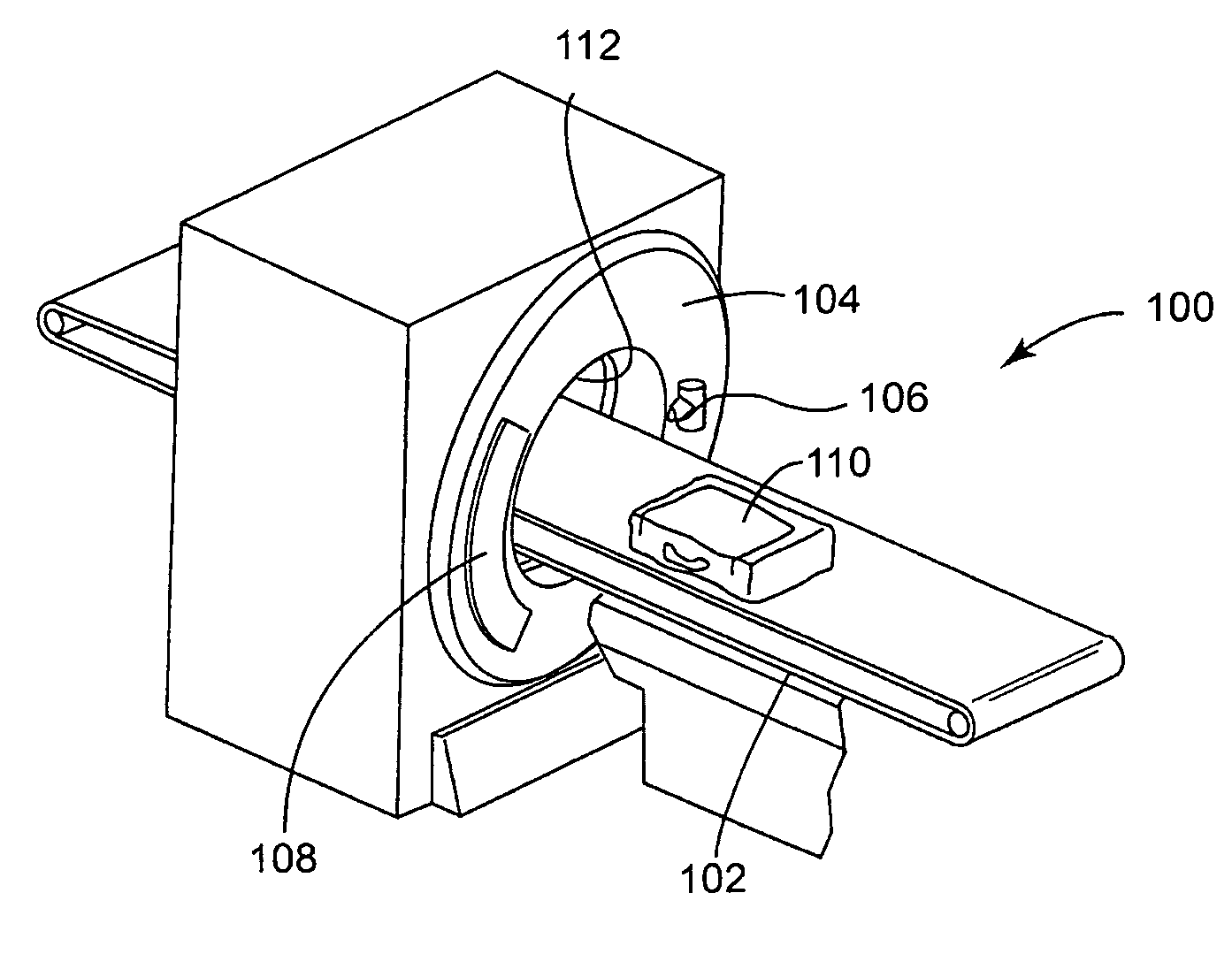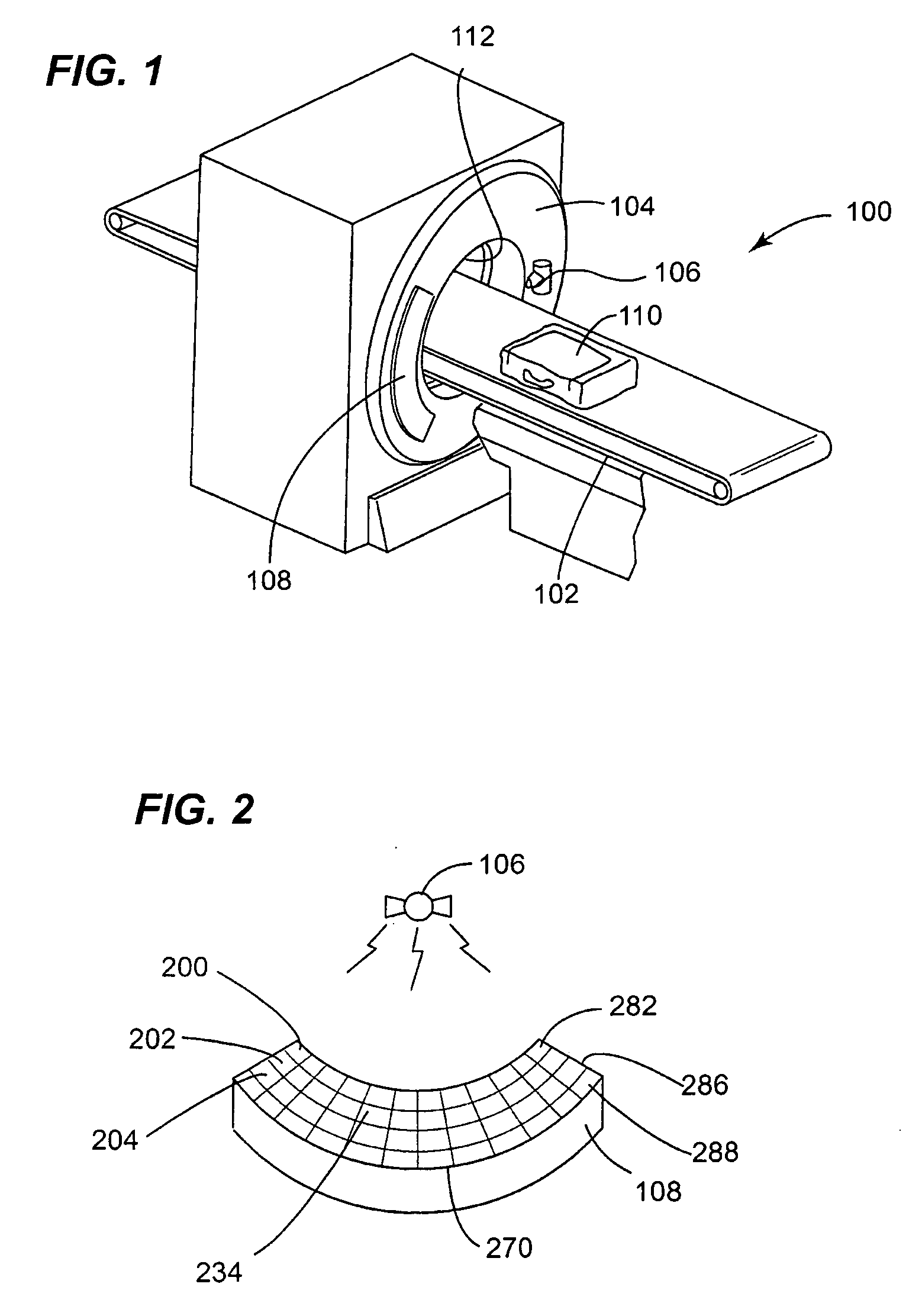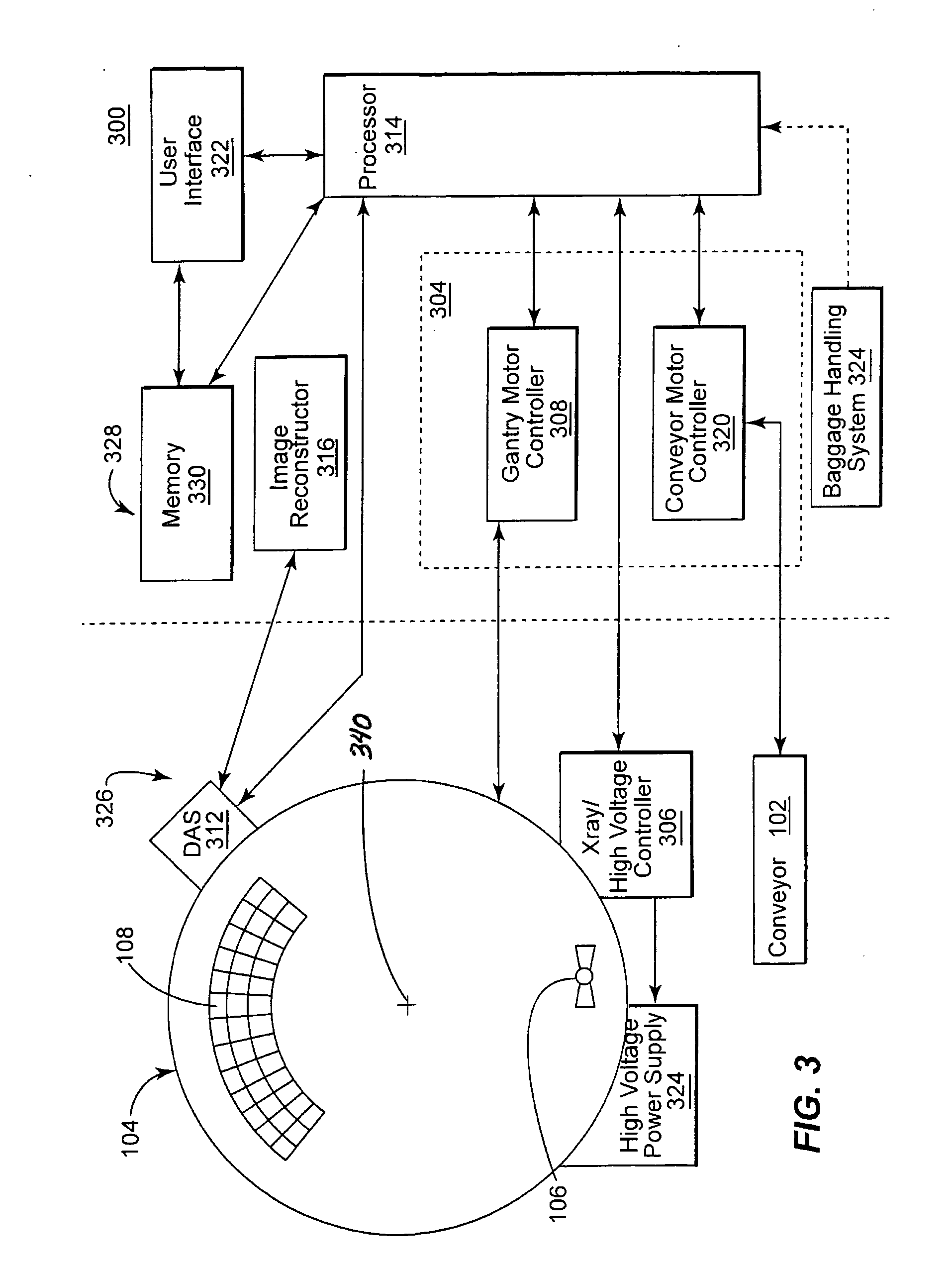Image based computed tomography number and volume corrections for thin objects in computed tomography systems
a computed tomography and image technology, applied in image analysis, image enhancement, instruments, etc., can solve the problems of interior pixels not reflecting the true ct number of objects, the accuracy of ct number is further limited, and the accuracy of ct number is limited
- Summary
- Abstract
- Description
- Claims
- Application Information
AI Technical Summary
Problems solved by technology
Method used
Image
Examples
Embodiment Construction
[0030]In the following description, numerous specific details are set forth to provide a more thorough understanding of the invention. As will be apparent to those skilled in the art, however, various changes using different configurations may be made without departing from the scope of the invention. In other instances, well-known features have not been described in order to avoid obscuring the invention. Thus, the invention is not considered limited to the particular illustrative embodiments shown in the specification and all such alternate embodiments are intended to be included in the scope of the appended claims.
[0031]One of the technical effects disclosed herein is an improved detection and analysis of thin objects in computed tomography (“CT”) systems.
[0032]Aspects of the invention are described herein as utilizing an X-ray emitter / detector array combination that rotates. However, it is appreciated that aspects of the invention can be used with scanners that have a stationary...
PUM
 Login to View More
Login to View More Abstract
Description
Claims
Application Information
 Login to View More
Login to View More - R&D
- Intellectual Property
- Life Sciences
- Materials
- Tech Scout
- Unparalleled Data Quality
- Higher Quality Content
- 60% Fewer Hallucinations
Browse by: Latest US Patents, China's latest patents, Technical Efficacy Thesaurus, Application Domain, Technology Topic, Popular Technical Reports.
© 2025 PatSnap. All rights reserved.Legal|Privacy policy|Modern Slavery Act Transparency Statement|Sitemap|About US| Contact US: help@patsnap.com



